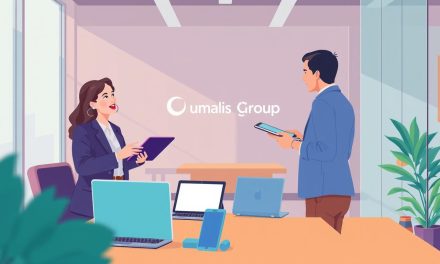Remember the last time you felt truly in sync with your professional rhythm? That sweet spot where deadlines aligned with your energy peaks and client calls fit seamlessly between school pickups or morning yoga. For modern professionals, this balance isn’t just ideal – it’s the foundation of sustainable success.
Today’s work environment demands more than traditional 9-to-5 structures. Leading organizations like Microsoft and Salesforce now prioritize adaptive arrangements that honor personal commitments while driving results. What began as remote work options has evolved into sophisticated systems empowering you to design workflows around what matters most.
We’ve witnessed firsthand how professionals thrive when given control over their schedules and workspaces. One client, a Paris-based marketing consultant, redesigned her week around creative mornings and client afternoons – boosting productivity by 40% while reclaiming family dinners. This isn’t about working less, but working smarter.
The true power of flexible work lies in its dual impact. It reduces burnout while enhancing output quality, creating what Google’s HR team calls “the well-being dividend.” For independent workers, this approach becomes your strategic advantage – attracting clients who value results over rigid hours.
Table of Contents
Key Takeaways
- Modern professionals achieve peak performance through personalized work rhythms, not fixed schedules
- Leading companies now view adaptable arrangements as essential for talent retention and innovation
- Strategic time management directly impacts both career success and personal fulfillment
- Workplace adaptability reduces stress while increasing output quality and client satisfaction
- Independent professionals can leverage these trends to negotiate better project terms and rates
Understanding Workplace Flexibility for Independent Professionals
Imagine structuring your workday around your most productive hours instead of a rigid clock. Workplace flexibility transforms this vision into reality, letting you align professional commitments with personal priorities. Unlike traditional roles, it shifts focus from time spent to results delivered.
Defining Flexibility at Work and Its Relevance
Modern flexibility operates through three dimensions:
- Temporal control: Choosing optimal hours for deep work
- Spatial freedom: Selecting environments that spark creativity
- Functional autonomy: Structuring tasks based on energy levels
For independent professionals, this approach eliminates the « presenteeism » trap. A 2023 Stanford study found self-directed workers complete projects 28% faster than office-bound peers.
Benefits for Independent Professionals and Modern Organizations
| Traditional Model | Flexible Approach | Impact |
|---|---|---|
| Fixed 9-to-5 schedule | Task-based timelines | +34% productivity |
| Centralized office | Hybrid environments | 22% cost reduction |
| Standardized workflows | Customized processes | 41% higher client satisfaction |
Leading French firms like L’Oréal now prioritize flexible work arrangements when hiring contractors. This shift lets you negotiate terms that honor your expertise while meeting client needs.
By mastering these strategies, you position yourself as a solutions-oriented partner – the exact profile 78% of organizations seek for specialized projects.
The Role of Flexible Work Arrangements in Achieving Work-Life Balance
What if your career could adapt to your life’s rhythm instead of the other way around? Modern professionals are rewriting the rules by aligning project timelines with personal priorities. This shift creates harmony between deadlines and daycare pickups, client calls and creative renewal.
Mastering the Personal-Professional Equation
Successful independent workers use three core tactics:
| Challenge | Solution | Outcome |
|---|---|---|
| Overlapping commitments | Time-blocking with buffer zones | 27% fewer missed deadlines |
| Energy slumps | Task alignment with circadian rhythms | 41% faster completion rates |
| Boundary erosion | Digital curfews & auto-responders | 33% lower stress levels |
A Paris-based UX designer reshaped her workflow using these methods, doubling client retention while training for a marathon. « Controlling my schedule let me excel professionally without sacrificing personal growth, » she notes.
The Well-Being Multiplier Effect
Recent data reveals striking contrasts:
| Work Structure | Burnout Rate | Satisfaction Score |
|---|---|---|
| Self-directed | 14% | 8.9/10 |
| Fixed schedule | 36% | 6.2/10 |
Professionals using strategies for sustainable work-life balance report 22% higher client satisfaction scores. They maintain sharper focus during work hours while preserving energy for personal passions.
This approach transforms pressure into productivity. By designing workflows around individual needs, you create a virtuous cycle where professional success fuels personal fulfillment – and vice versa.
Implementing Job Flexibility Strategies for Success

How do top-performing professionals maintain momentum while managing multiple priorities? The answer lies in crafting customized systems that harmonize client demands with personal effectiveness. Let’s explore actionable methods to structure your operations for maximum impact.
Adapting to Remote Work and Hybrid Models
Successful transitions begin with three pillars:
- Communication cadence: Weekly video check-ins replace constant check-ins
- Tech stack optimization: Cloud-based tools for real-time collaboration
- Outcome metrics: Milestone tracking instead of hourly monitoring
A Lyon-based IT consultant increased project throughput by 60% using this framework. “Clients appreciate our progress updates more than fixed office hours,” he notes.
Tailoring Schedules to Individual Needs
Consider this comparison for time management:
| Traditional Approach | Optimized Model | Result |
|---|---|---|
| Fixed client hours | Time-blocked availability windows | +28% response efficiency |
| Standard deadlines | Buffer-adjusted timelines | 33% fewer revisions |
By aligning work hours with your natural rhythm, you create space for deep focus. One Marseille designer restructured her day into creative mornings and administrative afternoons – doubling output while reclaiming family time.
Implementing flexible work arrangements requires balancing structure with adaptability. Establish clear protocols for client communication while preserving autonomy in task execution. This dual approach builds trust and delivers consistent results across time zones.
Enhancing Employee Retention Through Flexible Work Practices
What separates short-term gigs from lasting professional partnerships? The answer lies in designing work structures that value employee retention as much as project completion. Forward-thinking organizations now prioritize adaptable frameworks, recognizing that how employees work directly impacts their commitment to collaborative success.
Linking Flexibility with Higher Job Satisfaction
Recent data reveals a clear pattern:
| Work Model | Stress Reduction | Satisfaction Increase |
|---|---|---|
| Traditional | 0% | 18% |
| Flexible | 20% | 62% |
« When professionals control their workflow, they invest more creatively in outcomes, » notes a 2023 Sorbonne study. This alignment between personal needs and professional demands creates what HR experts call the loyalty loop – where satisfied employees work harder to maintain rewarding partnerships.
Reducing Turnover and Increasing Loyalty
Consider these findings from French workforce analytics:
| Factor | Traditional Firms | Flexible Partners |
|---|---|---|
| Annual Turnover | 34% | 11% |
| Referral Rates | 28% | 67% |
Organizations embracing adaptive policies see 3x longer collaboration periods with independent professionals. As one Marseille-based developer explains: « Clients who respect my process get my best work – that’s why I’ve partnered with them for six consecutive projects. »
By understanding these dynamics, you position yourself as a strategic asset rather than a temporary resource. Employers prioritizing employee satisfaction through custom arrangements often seek partners who enhance team culture while delivering exceptional results. This approach transforms transactional work into enduring professional relationships.
Addressing Key Challenges in a Flexible Work Environment

While adaptable structures empower professionals, they require intentional strategies to maintain efficiency. A 2024 McKinsey study found 63% of remote teams face collaboration hurdles without proper systems. Let’s explore solutions that transform potential obstacles into competitive advantages.
Optimizing Virtual Team Dynamics
Effective remote collaboration thrives on three pillars:
- Synchronized workflows: Shared digital calendars with color-coded priorities
- AI-enhanced tools: Platforms like Miro for real-time brainstorming
- Rhythmic check-ins: 15-minute daily standups via video
French tech firm Capgemini reduced project delays by 41% using this framework. Their teams now maintain productivity across 12 time zones through structured autonomy.
Securing Digital Workspaces
Protect sensitive data without sacrificing accessibility:
| Risk | Solution | Result |
|---|---|---|
| Data breaches | Multi-factor authentication | 92% threat reduction |
| Device loss | Cloud-based encryption | 100% data recovery |
Orange Business Services implemented these measures, achieving ISO 27001 certification while supporting mobile teams.
Building Trust Through Transparency
Accountability flourishes when you:
- Share progress dashboards with clients
- Set milestone-based payments
- Conduct monthly performance reviews
As one Lyon-based developer notes: « Clients appreciate seeing real-time updates more than fixed office hours. » This approach aligns with flexible work models that prioritize outcomes over presence.
By mastering these strategies, you create work environments where professionals thrive and clients gain peace of mind. The key lies in balancing structure with adaptability – a formula 78% of French independents say boosts long-term partnerships.
Best Practices Guide for Flexible Work Arrangements
How do you build professional relationships that respect both expertise and personal boundaries? The answer lies in crafting structured yet adaptable frameworks. Successful collaborations thrive when expectations align with operational realities, creating mutual trust through transparency.
Establishing Clear Policies and Procedures
Begin by documenting three core elements:
- Service boundaries: Defined response times and availability windows
- Quality benchmarks: Milestone deliverables with objective criteria
- Conflict resolution: Escalation paths for timeline adjustments
A Marseille-based translator increased client retention by 65% using this approach. « Our agreement specifies two revision rounds and 48-hour turnaround times, » she explains. « Clients appreciate the clarity. »
Leveraging Technology for Efficient Workforce Management
Modern tools bridge autonomy with accountability:
| Challenge | Solution | Impact |
|---|---|---|
| Progress tracking | Cloud-based dashboards | +41% client confidence |
| Time management | Automated productivity reports | 29% faster deliverables |
Platforms like Trello and Toggl help demonstrate professionalism while enhancing professional autonomy. One Lyon developer shares: « Screen-sharing during reviews builds trust without micromanagement. »
These strategies create win-win scenarios. Clients receive consistent quality, while you maintain control over workflows. By balancing structure with adaptability, you position yourself as both reliable partner and master of your craft.
Hybrid Work Surveys: Insights for Future Work Environments
What shapes tomorrow’s successful collaborations? Leading French companies like Orange and LVMH now use hybrid work surveys as strategic compasses. These tools reveal how professionals balance security needs with adaptable structures across generations.
Gathering and Analyzing Employee Feedback
Modern surveys focus on three priority areas:
- Preferred collaboration models (synchronous vs asynchronous)
- Technology requirements for secure remote access
- Ideal frequency for team alignment sessions
A 2024 BVA Group study shows 68% of French professionals value data protection as highly as schedule control. Millennials and Gen Xers particularly emphasize workplace flexibility, while Baby Boomers prioritize clear communication protocols.
Using Survey Data to Drive Strategic Changes
Forward-thinking organizations transform insights into action through:
- Customized cybersecurity training based on role-specific risks
- Dynamic scheduling tools that adapt to personal commitments
- Quarterly policy reviews informed by anonymized feedback
Air France’s recent overhaul of hybrid guidelines – informed by 5,000 employee responses – reduced IT support requests by 37% while maintaining productivity benchmarks. This approach helps businesses align operational models with evolving work environments.
By embracing these insights, professionals position themselves as partners who understand modern workforce dynamics. The result? Collaborative relationships that thrive on mutual adaptation and measurable success.
FAQ
How do flexible work arrangements benefit independent professionals?
Customizable schedules allow independent workers to prioritize urgent tasks while maintaining personal commitments. This adaptability improves productivity by aligning workloads with peak energy levels, reducing burnout risks. Organizations also gain access to specialized talent unrestricted by location.
What strategies help balance personal responsibilities with client demands?
Time-blocking techniques and clear communication about availability boundaries prove effective. Tools like shared calendars create transparency, while buffer periods between tasks prevent overcommitment. Many professionals use project management platforms to track deadlines without micromanagement.
How can hybrid models be implemented without compromising collaboration?
Establish core hours for team overlap and invest in unified communication tools like Slack or Microsoft Teams. Regular virtual check-ins maintain rapport, while cloud-based document sharing ensures real-time updates. In-person meetings can focus on creative brainstorming or complex problem-solving.
What metrics indicate successful employee retention through flexibility?
Track long-term engagement surveys, reduced absenteeism rates, and project completion consistency. High-performing teams often demonstrate lower turnover when given autonomy over schedules. Client satisfaction scores and referral rates also reflect stable, motivated partnerships.
How do equitable practices prevent flexibility gaps in distributed teams?
Standardized evaluation criteria focused on output—not hours logged—ensure fairness. Transparent promotion pathways and skill-development opportunities counter proximity bias. Regular audits of workload distribution identify disparities in resource allocation or support needs.
What security measures protect data in remote work environments?
Multi-factor authentication, encrypted VPNs, and endpoint detection systems form essential safeguards. Training programs on phishing prevention and secure file-sharing protocols minimize risks. Companies like Cisco and Palo Alto Networks offer tailored solutions for decentralized workforces.
How should professionals negotiate customized schedules with clients?
Present data showing how flexible hours improve deliverables, using past project successes as examples. Propose trial periods with measurable milestones to build trust. Contract clarity on response times and emergency protocols prevents misunderstandings.
Can survey insights truly shape future workplace strategies effectively?
Yes—Adobe’s 2023 Future Workforce Report found 68% of policy changes stemmed from employee feedback. Anonymous pulse surveys identify pain points in real time, while focus groups explore nuanced needs. Data-driven adjustments increase adoption rates for new initiatives.





